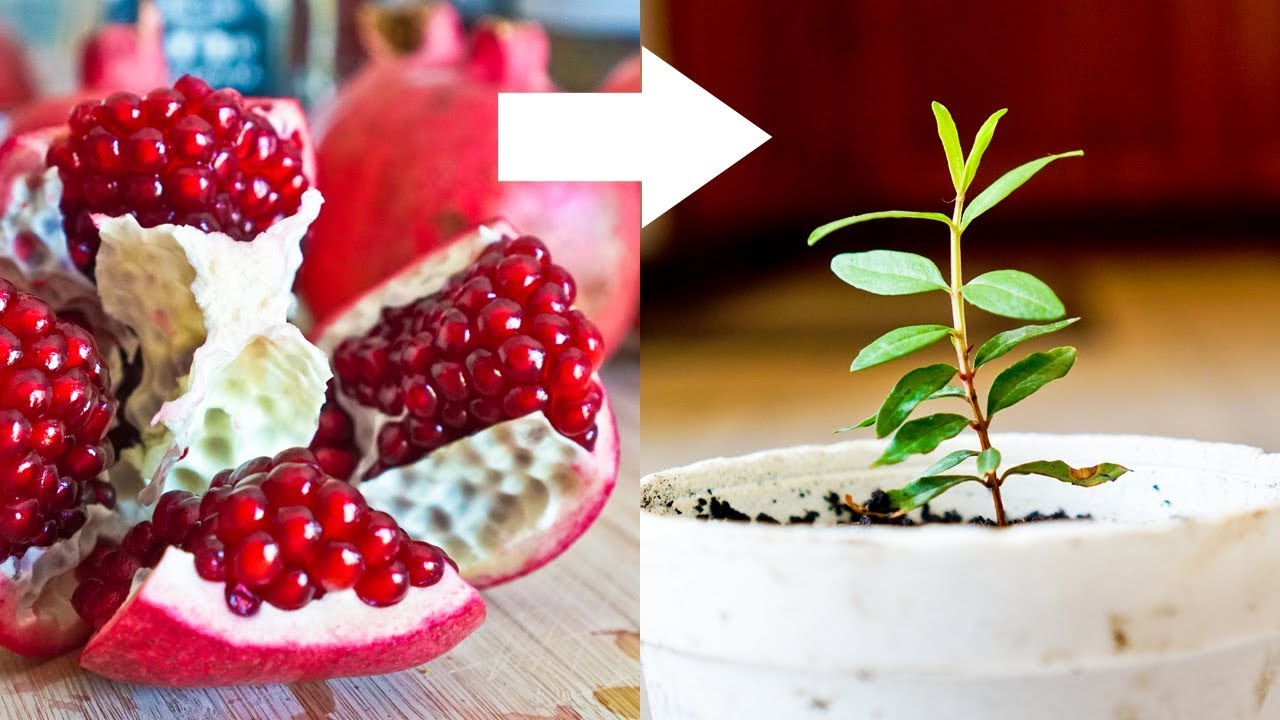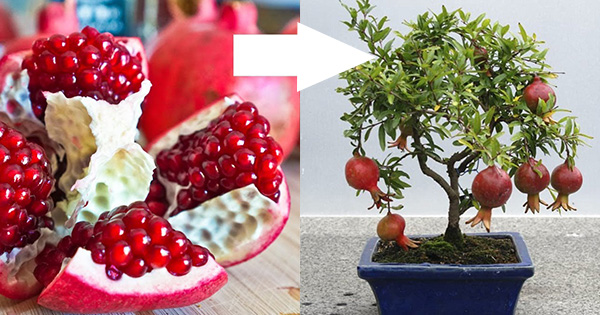Pomegranate trees are not only known for their delicious and nutrient-rich fruits, but they also make for beautiful ornamental plants. If you don’t have a vast backyard, don’t fret! Pomegranates can be grown in pots, allowing urban gardeners and those with limited space to enjoy the process. Here’s a step-by-step guide to growing a pomegranate tree from seeds in a pot:

1. Collecting Seeds :
- Select a ripe pomegranate: Choose a fruit that is firm, brightly colored, and free from blemishes.
- Extract the seeds: Cut the pomegranate in half and gently scoop out the seeds.
- Clean the seeds: Place the seeds in a strainer and run cold water over them to remove any attached pulp.
2. Preparing the Seeds :
- Soak overnight: Put the cleaned seeds in a bowl and cover them with water. Allow them to soak overnight.
- Stratification (Optional): This process involves placing the seeds in a moist paper towel inside a plastic bag and refrigerating them for a few weeks. It can increase germination rates, though pomegranate seeds often germinate without stratification.
3. Planting the Seeds :
- Choose the right pot: A 6-8 inch pot with good drainage is ideal to start.
- Prepare the soil: Opt for a well-draining potting mix, which can be purchased or prepared at home using equal parts compost, sand, and peat moss.
- Sow the seeds: Place seeds about ¼-inch deep in the soil, ensuring they are spaced at least an inch apart.
- Water lightly: The soil should be moist, not soggy.
4. Caring for the Seedlings :
- Sunlight: Ensure your pot receives at least 5-6 hours of direct sunlight daily.
- Watering: Keep the soil consistently moist but not waterlogged. Once the seedlings have grown a few inches, you can reduce the frequency.
- Protection: While pomegranates can tolerate some cold, it’s best to protect young plants from freezing temperatures.
5. Transplanting and Pruning :
- Size matters: When your tree outgrows its initial pot, transfer it to a larger one, or directly to the ground if space allows.
- Pruning: Once your tree reaches about a foot in height, consider pruning to encourage branching. This will provide a stronger foundation and promote better fruiting in future years.
6. Fertilizing :
- Use a balanced, slow-release fertilizer, preferably organic. Start fertilizing in spring and continue through the growing season, but avoid over-fertilizing as this can hinder fruiting.
7. Potential Challenges :
- Pests: Keep an eye out for aphids, whiteflies, and mealybugs.
- Diseases: Pomegranate trees are relatively hardy, but they can occasionally suffer from fungal infections. Ensure good air circulation and avoid overwatering.
8. Harvesting :
Patience is key! It may take a few years before your tree bears fruit, especially when grown from seeds. But once they appear, wait for the pomegranates to reach a deep color and sound slightly hollow when tapped before harvesting.
Conclusion :
Growing a pomegranate tree from seeds in a pot is an enjoyable endeavor that even those with limited space can undertake. With patience and proper care, you’ll be rewarded with both eye-catching foliage and mouth-watering fruits. Happy gardening!










